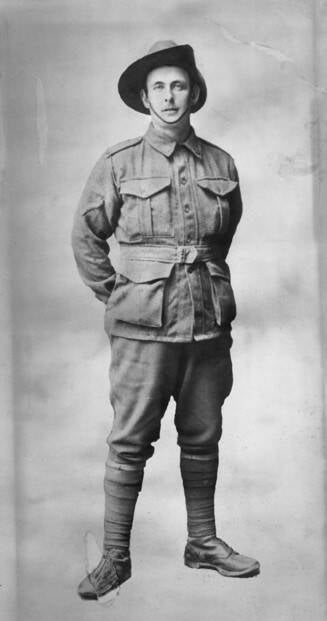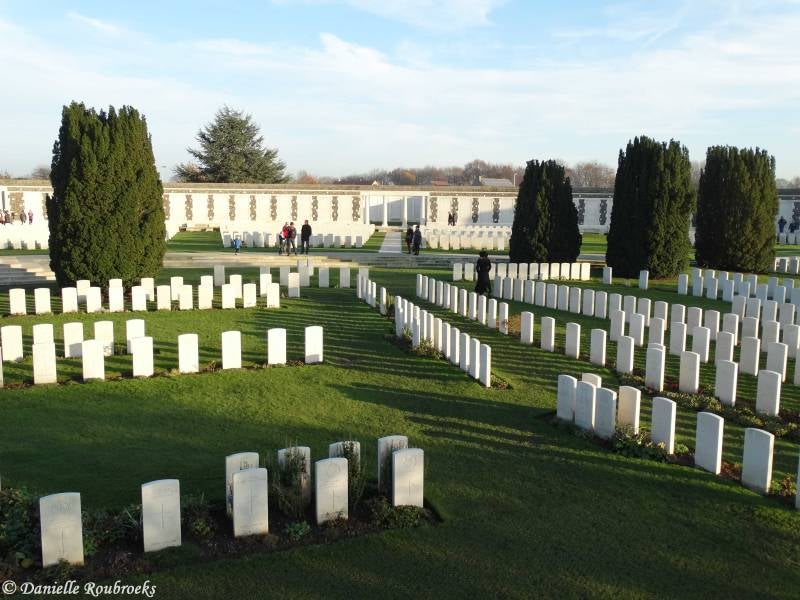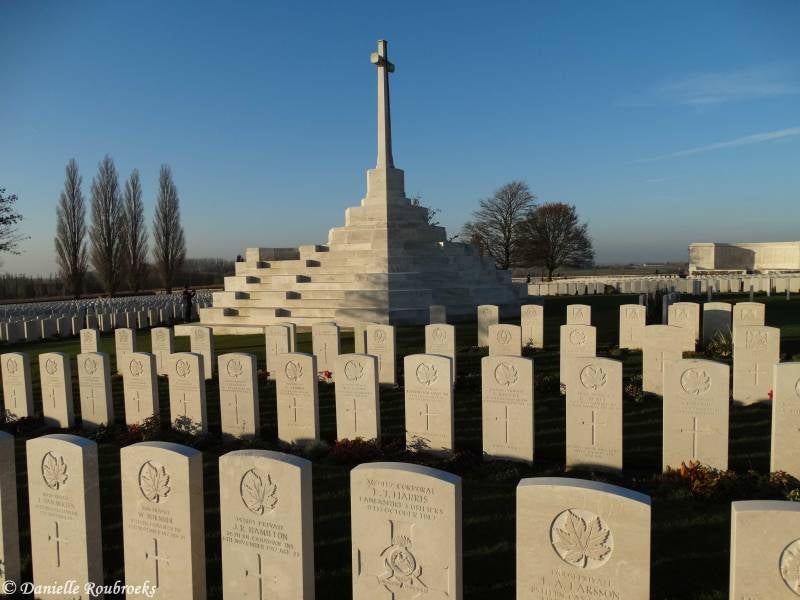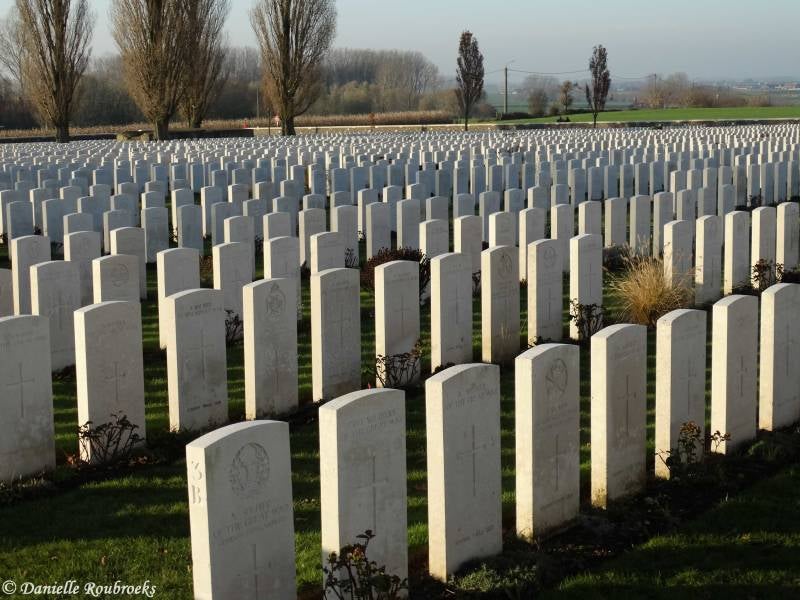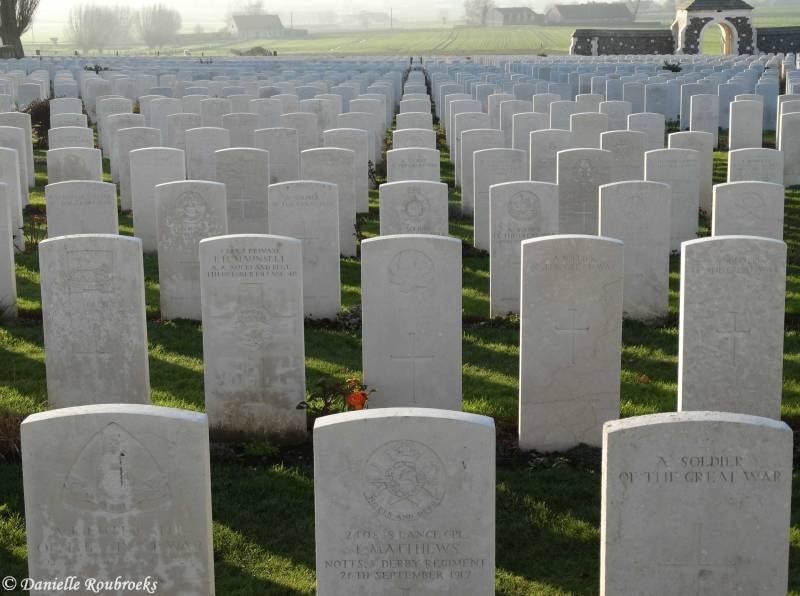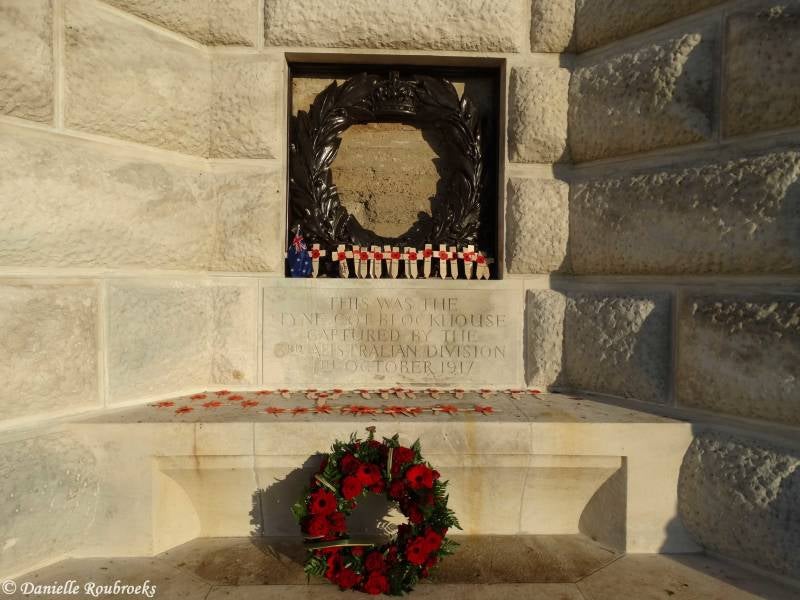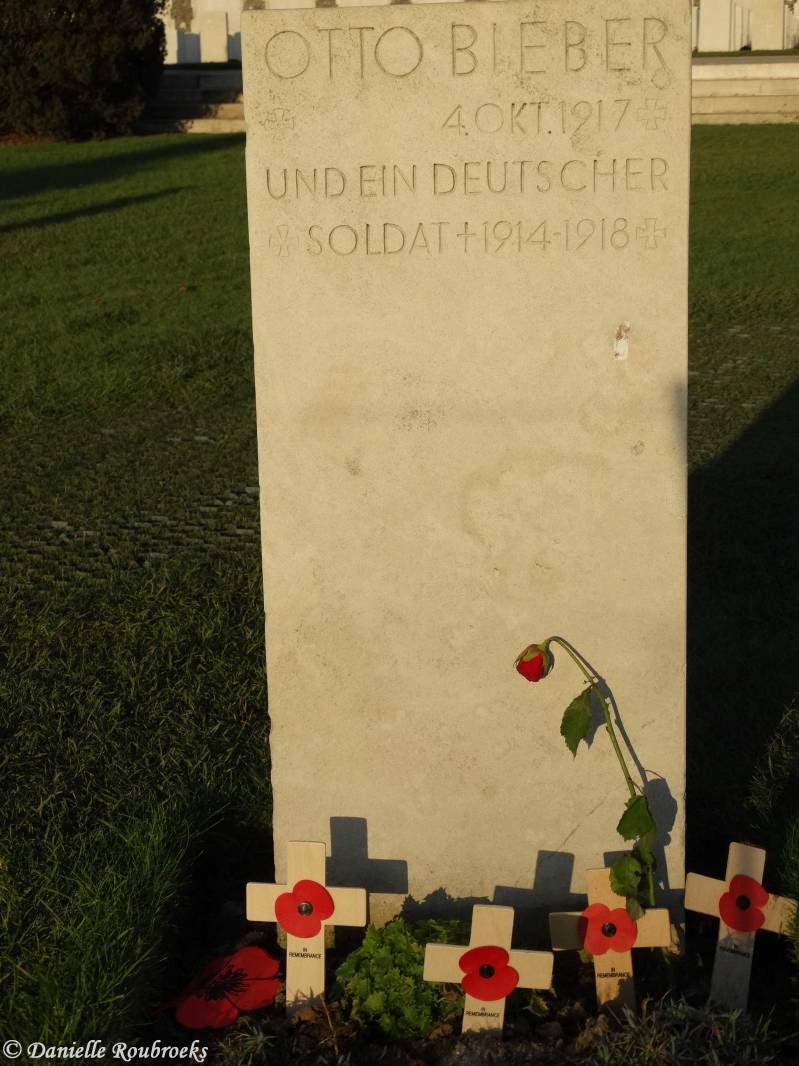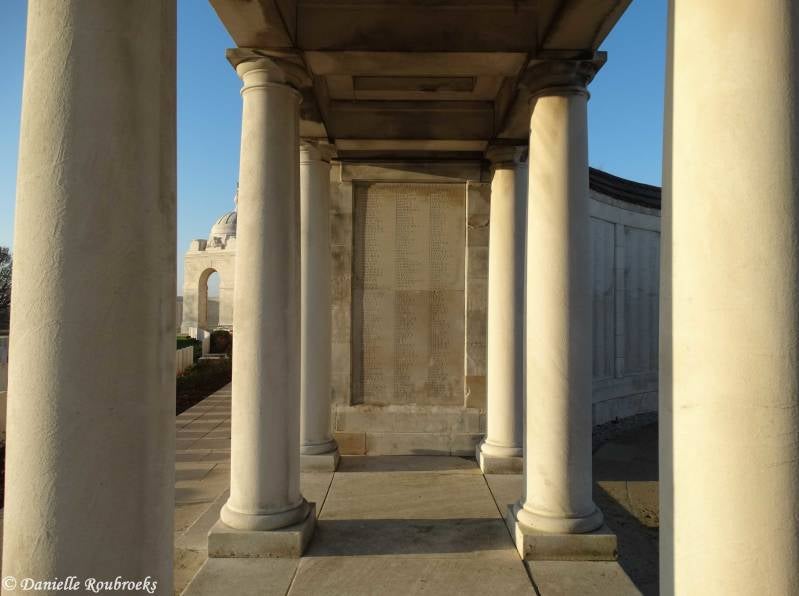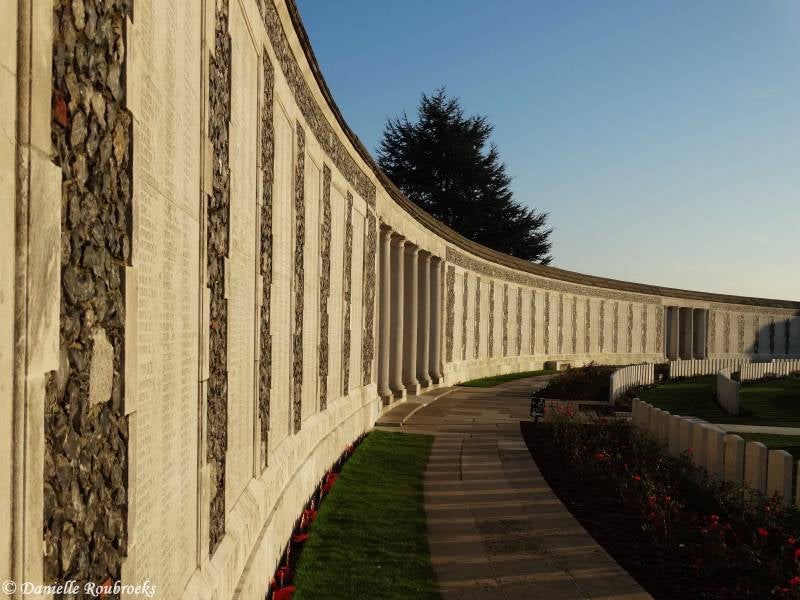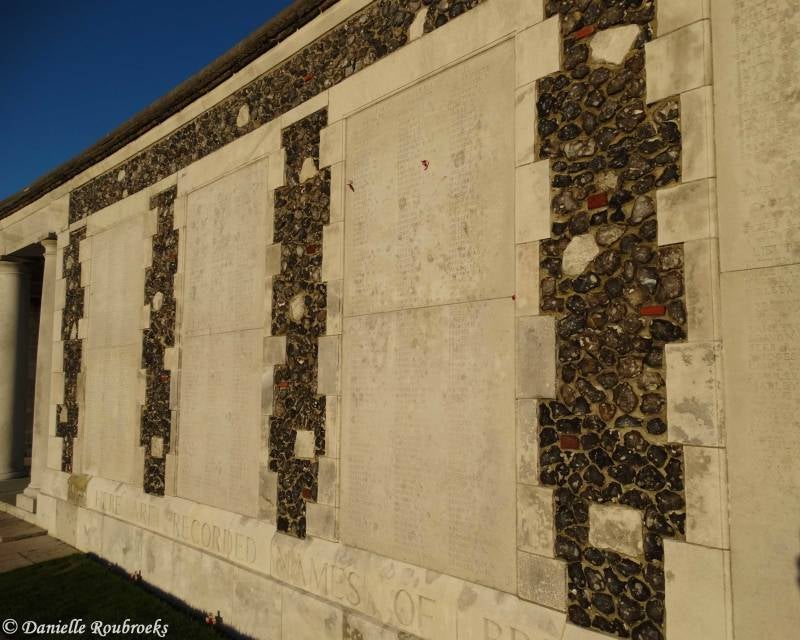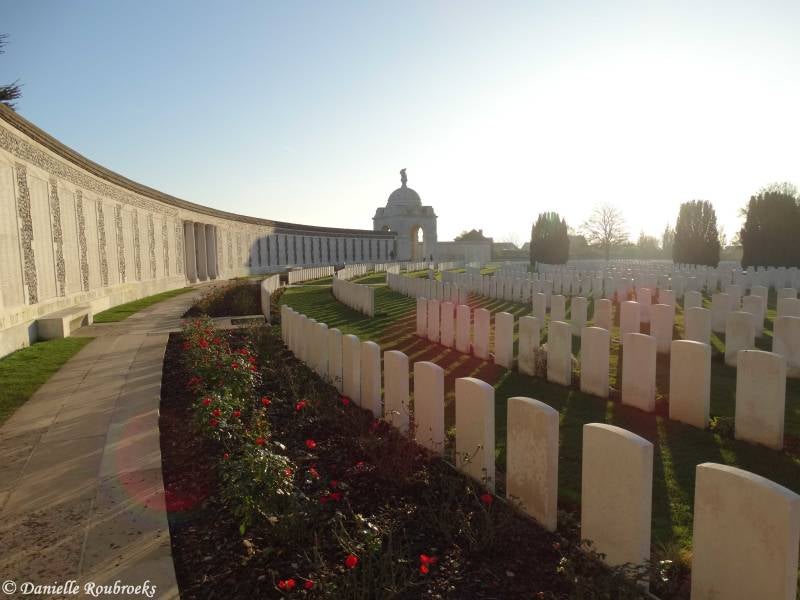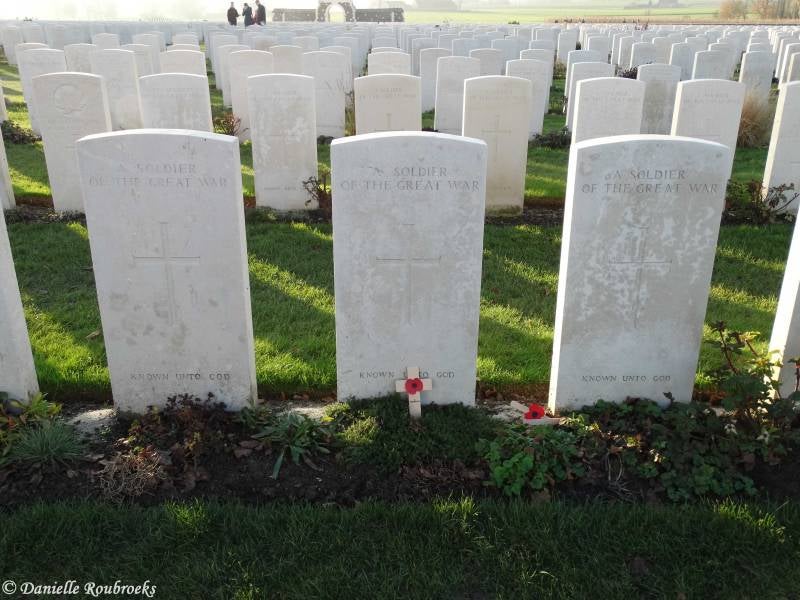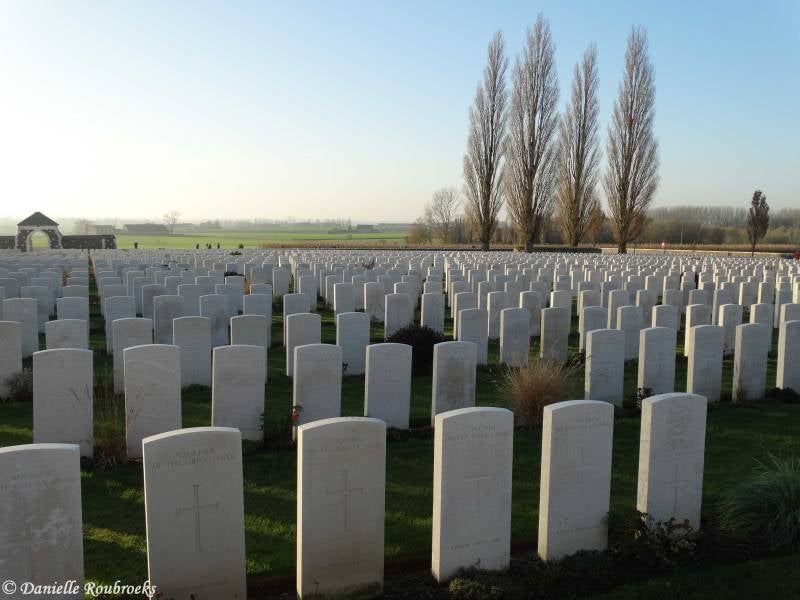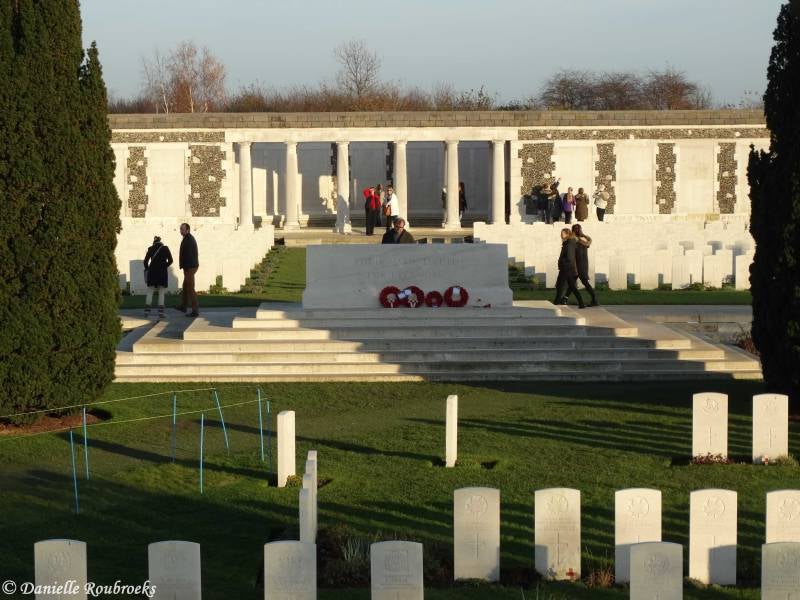Tyne Cot Cemetery
History Information (Source: CWGC)
Tyne Cot or Tyne Cottage was a barn named by the Northumberland Fusiliers which stood near the level crossing on the road from Passchendaele to Broodseinde. Around it were a number of blockhouses or ‘pillboxes'. The barn, which had become the centre of five or six German blockhouses, was captured by the 3rd Australian Division on 4 October 1917, in the advance on Passchendaele. One of these pillboxes was unusually large and was used as an advanced dressing station after its capture. From 6 October to the end of March 1918, 343 graves were made, on two sides of it, by the 50th (Northumbrian) and 33rd Divisions, and by two Canadian units. The cemetery was in German hands again from 13 April to 28 September, when it was finally recaptured, with Passchendaele, by the Belgian Army.
Tyne Cot Cemetery is in an area known as the Ypres Salient. Broadly speaking, the Salient stretched from Langemarck in the north to the northern edge in Ploegsteert Wood in the south, but it varied in area and shape throughout the war. Tyne Cot Cemetery was greatly enlarged after the Armistice when remains were brought in from the battlefields of Passchendaele and Langemarck, and from a few small burial grounds,
There are now more than 11,900 Commonwealth servicemen of the First World War buried or commemorated in Tyne Cot Cemetery. More than 8,370 of the burials are unidentified but there are special memorials to more than 80 casualties known or believed to be buried among them. Other special memorials commemorate 20 casualties whose graves were destroyed by shell fire. There are also four German burials, three being unidentified.
The Tyne Cot Memorial forms the north-eastern boundary of Tyne Cot Cemetery and commemorates nearly 35,000 servicemen from the United Kingdom and New Zealand who died in the Ypres Salient after 16 August 1917 and whose graves are not known. The memorial stands close to the farthest point in Belgium reached by Commonwealth forces in the First World War until the final advance to victory.
Served with
- United Kingdom (2349)
- Australian (582)
- Canadian (451)
- New Zealand (198)
- South African (24)
- German (1)
Served in
- Army (3574)
- Air Force (16)
- Navy (15)
VICTORIA CROSS
Captain Clarence Smith JEFFRIES - 34th Bn. Australian Infantry, A.I.F.
Died 12 October 1917 Age 23
Country of Service: Australian
Awards: Victoria Cross
Citation
An extract from "The London Gazette," No. 30433, dated 18th Dec., 1917, records the following:-"For most conspicuous bravery in attack, when his company was held up by enemy machine-gun fire from concrete emplacements. Organising a party, he rushed one emplacement, capturing four machine guns and thirty-five prisoners. He then led his company forward under extremely heavy enemy artillery barrage and enfilade machine-gun fire to the objective. Later, he again organised a successful attack on a machine-gun emplacement, capturing two machine guns and thirty more prisoners. This gallant officer was killed during the attack, but it was entirely due to his bravery and initiative that the centre of the attack was not held up for a lengthy period. His example had a most inspiring influence."
Grave Reference: XL. E. 1.
(Source: Wikipedia)
Sergeant Lewis McGEE - 456 - 40th Bn. Australian Infantry, A.I.F.
Died 12 October 1917 Age 29
Country of Service: Australian
Awards: Victoria Cross
Citation
An extract from "The London Gazette" No. 30400, dated 23rd Nov., 1917, records the following:- "For most conspicuous bravery when, in the advance to the final objective, Serjt. McGee led his platoon with great dash and bravery, though strongly opposed, and under heavy shell fire. His platoon was suffering severely and the advance of the Company was stopped by machine gun fire from a ' Pill-box ' post. Single-handed Serjt. McGee rushed the post armed only with a revolver. He shot some of the crew and captured the rest, and thus enabled the advance to proceed. He re-organised the remnants of his platoon and was foremost in the remainder of the advance, and during consolidation of the position he did splendid work. This Non-commissioned Officer's coolness and bravery were conspicuous and contributed largely to the success of the Company's operations. Serjt McGee was subsequently killed in action."
Grave Reference: XX. D. 1.
(Source: Wikipedia)
Private James Peter ROBERTSON - 552665 - 27th Bn. Canadian Infantry
Died 06 November 1917 Age 35
Country of Service: Canadian
Awards: Victoria Cross
Citation
An extract from "The London Gazette" No. 30471, dated 8th Jan., 1918, records the following:-"For most conspicuous bravery and outstanding devotion to duty in attack. When his platoon was held up by uncut wire and a machine gun causing many casualties, Pte. Robertson dashed to an opening on the flank, rushed the machine gun and, after a desperate struggle with the crew, killed four and then turned the gun on the remainder, who, overcome by the fierceness of his onslaught, were running towards their own lines. His gallant work enabled the platoon to advance. He inflicted many more casualties among the enemy, and then carrying the captured machine gun, he led his platoon to the final objective. He there selected an excellent position and got the gun into action, firing on the retreating enemy who by this time were quite demoralised by the fire brought to bear on them. During the consolidation Pte. Robertson's most determined use of the machine gun kept down the fire of the enemy snipers; his courage and his coolness cheered his comrades and inspired them to the finest efforts. Later, when two of our snipers were badly wounded in front of our trench, he went out and carried one of them in under very severe fire. He was killed just as he returned with the second man."
Grave Reference: LVIII. D. 26.
(Source: Wikipedia)






